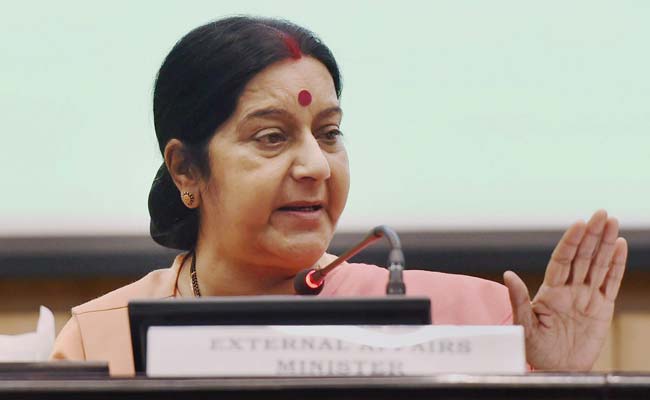 Janjivan Bureau / New Delhi: India is working with ASEAN to evolve “regional security architecture” in the Asia Pacific with the aim of finding collaborative solutions to emerging and non-traditional challenges, External Affairs Minister Sushma Swaraj said today.
Janjivan Bureau / New Delhi: India is working with ASEAN to evolve “regional security architecture” in the Asia Pacific with the aim of finding collaborative solutions to emerging and non-traditional challenges, External Affairs Minister Sushma Swaraj said today.
Discussing various aspects of India’s strategic partnership with the powerful bloc, Swaraj said ASEAN-India trade was back on track after two years of slow growth with an increase of 8 per cent in 2016-17.
In her address on India-ASEAN partnership at the Research and Information System, a think tank, the minister listed terror financing, arms smuggling, human trafficking, money laundering and cyber crime as major challenges facing the region. India and ASEAN, she added, had been working to combat them.
“India has been working with ASEAN towards evolving regional security architecture in the Asia Pacific that hinges on emphasising the peaceful settlement of disputes, finding collaborative solutions to emerging and non-traditional challenges, and support for the centrality of ASEAN.”
Enhancing maritime cooperation and security had been an area of focus for both ASEAN and India, she said.
Discussing economic ties, she said the bloc had become India’s fourth largest trading partner, accounting for 10 per cent of total trade.
According to Swaraj, India was actively engaged in Regional Comprehensive Economic Partnership negotiations involving ASEAN and its six FTA partners, which, when finalized, would be the largest regional trading arrangement, accounting for about 40 per cent of world trade.
“After almost two years of slow growth, ASEAN-India trade is now back on track with an increase of 8 per cent in 2016-17 and with India’s exports to ASEAN having increased by almost 20 per cent in 2016-17,” she said.
Connectivity, the minister felt, was a “huge enabler” for stimulating trade and investment as well as to ensure peace and stability.
“We recognise that the single most important ingredient that can make a qualitative shift in our economic engagement with ASEAN is a major boost towards infrastructure and connectivity, both within India and in the North East in particular, and with ASEAN.”
The external affairs minister said efforts were on to enhance connectivity by land, air and sea to transform the corridors of connectivity into corridors of economic cooperation.
“For enhancing digital connectivity, specific proposals have been put forward, involving the setting up of a regional high-capacity fibre-optic network, supplemented by national rural broadband networks and digital villages in remote areas.”
Highlighting India’s Act East policy, she said various communities of the North East share “ties of blood and history” with ASEAN countries.
“The North East is a ‘natural partner’ in India’s Act East Policy.”
Swaraj also talked about India’s cultural links as well as the influence of Hinduism in some ASEAN nations.
“Thailand incorporates significant elements from Hinduism in its architecture, arts, sculpture dance, drama and literature. The Cham temple complex of My Son Wat in Vietnam is dedicated to Bhadreshvara, an incarnation of the Lord Shiva.
“The magnificent Angkor Vat in Cambodia was originally built as a Hindu temple dedicated to the Lord Vishnu.
“The Vat Phou temple in Lao PDR, Ananda temple in Bagan, Myanmar and the Borobudur Buddhist temple in Indonesia are examples of the influence of Hindu architectural principles,” she said.

















